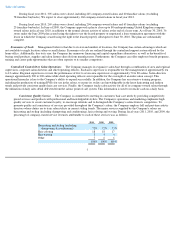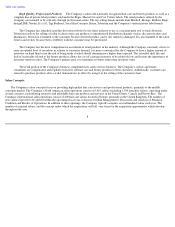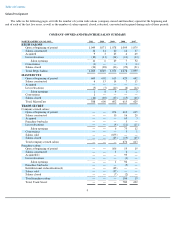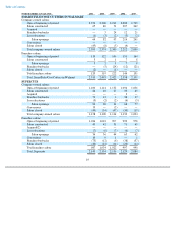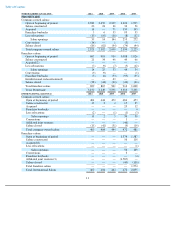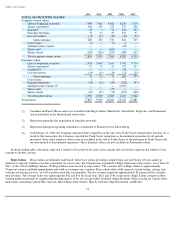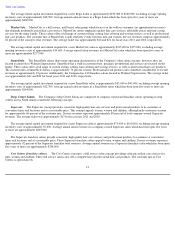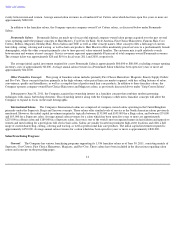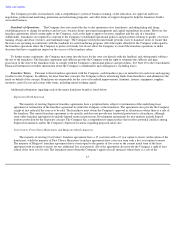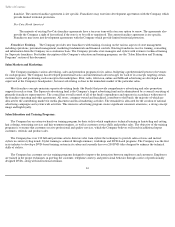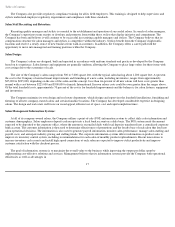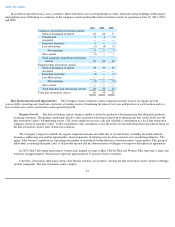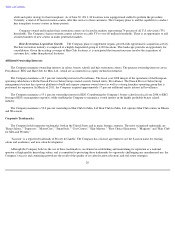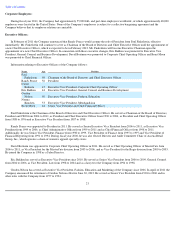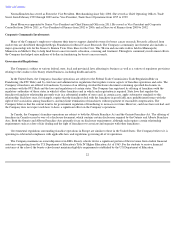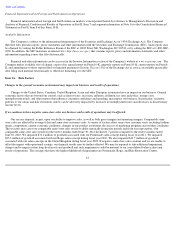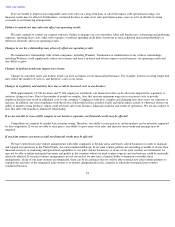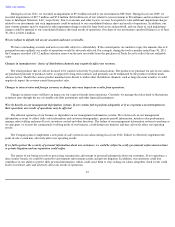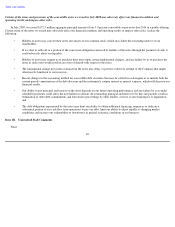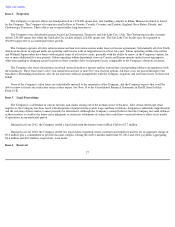Supercuts 2011 Annual Report Download - page 19
Download and view the complete annual report
Please find page 19 of the 2011 Supercuts annual report below. You can navigate through the pages in the report by either clicking on the pages listed below, or by using the keyword search tool below to find specific information within the annual report.
Table of Contents
The Company also provides regulatory compliance training for all its field employees. This training is designed to help supervisors and
stylists understand employee regulatory requirements and compliance with these standards.
Salon Staff Recruiting and Retention:
Recruiting quality managers and stylists is essential to the establishment and operation of successful salons. In search of salon managers,
the Company's supervisory team recruits or develops and promotes from within those stylists that display initiative and commitment. The
Company has been and believes it will continue to be successful in recruiting capable managers and stylists. The Company believes that its
compensation structure for salon managers and stylists is competitive within the industry. Stylists benefit from the Company's high-traffic
locations and receive a steady source of new business from walk-in customers. In addition, the Company offers a career path with the
opportunity to move into managerial and training positions within the Company.
Salon Design:
The Company's salons are designed, built and operated in accordance with uniform standards and practices developed by the Company
based on its experience. Salon fixtures and equipment are generally uniform, allowing the Company to place large orders for these items with
cost savings due to the economies of scale.
The size of the Company's salons ranges from 500 to 5,000 square feet, with the typical salon having about 1,200 square feet. At present,
the cost to the Company of normal tenant improvements and furnishing of a new salon, including inventories, ranges from approximately
$25,000 to $225,000, depending on the size of the salon and the concept. Less than ten percent of all new salons will have costs greater than
normal with a cost between $225,000 and $500,000 to furnish. International Sassoon salons costs could be even greater than the ranges above.
Of the total leasehold costs, approximately 70 percent of the cost is for leasehold improvements and the balance is for salon fixtures, equipment
and inventories.
The Company maintains its own design and real estate department, which designs and supervises the leasehold installations, furnishing and
fixturing of all new company-owned salons and certain franchise locations. The Company has developed considerable expertise in designing
salons. The design and real estate staff focus on visual appeal, efficient use of space, cost and rapid completion times.
Salon Management Information Systems:
At all of its company-owned salons, the Company utilizes a point-of-sale (POS) information system to collect daily sales information and
customer demographics. Salon employees deposit cash receipts into a local bank account on a daily basis. The POS system sends the amount
expected to be deposited to the corporate office, where the amount is reconciled daily with local deposits transferred into a centralized corporate
bank account. The customer information is then used to determine effectiveness of promotions and the loyalty base of each salon that feed into
salon operational decisions. The information is also used to generate payroll information, monitor salon performance, manage salon staffing and
payroll costs, and anticipate industry pricing and staffing trends. The corporate information systems deliver information on product sales to
improve its inventory control system, including recommendations for each salon of monthly product replenishments. Recent innovations to
increase inventory cycle counts and install high speed connections at each salon are expected to improve stylist productivity and improve
customer satisfaction with the checkout process.
The goal of information systems is to maximize the overall value to the business while improving the output per dollar spent by
implementing cost-effective solutions and services. Management believes that its information systems provide the Company with operational
efficiencies as well as advantages in
17


